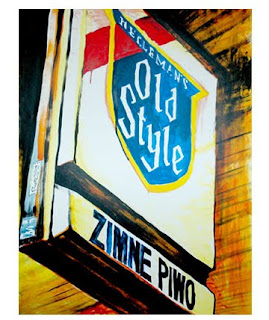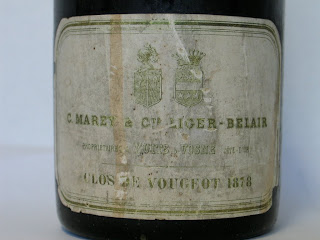Any winemaker will tell you that it takes a lot of beer to make a little wine. Conversely, any brewer will tell you that it takes a lot of beer to make... well, more beer.
Rightly so. Beer is fresh, light, fun, ready to consume. I know after a long day of tasting through a lineup of wines, heady with alcohol, tannin and acidity, all I want is a pint of malt, hops, and bubbles. It cleans the palate and clears the mind of the seriousness of a tasting. Everyone knows that beer is only for fun. Right?
 When I was young, age 3, to the dismay of my parents, I tasted BEER, the ubiquitous black and white generic available widely at the end of the seventies. An unattended can left at toddler height was my unfortunate introduction. It was as though I had eaten a severely rotten apple and washed it down with a glassful of shame. My parents needn't have been upset; that taste kept me away from any alcohol for a decade. At thirteen, the Schmidt's "Animal Beer" pilfered from my older sister's party kept me on the straight and narrow for another five years. After trying to choke that down, I turned to coffee for my vice, beginning my career as a barista at the age of fourteen. Then, at nineteen, while visiting a wine drinking friend, I was presented with a six pack of Pyramid Wheaten Ale. I was skeptical and chagrined, but decided to give it a shot. I was given the gift of flavor. Full, bready, floral, creamy flavor. I quickly finished my first three beers, bowled over at what I had been missing. I announced to my friend, sitting on the front porch with her wine in hand, that I was finally utilizing my liver to its fullest, then proceeded to take a nap.
When I was young, age 3, to the dismay of my parents, I tasted BEER, the ubiquitous black and white generic available widely at the end of the seventies. An unattended can left at toddler height was my unfortunate introduction. It was as though I had eaten a severely rotten apple and washed it down with a glassful of shame. My parents needn't have been upset; that taste kept me away from any alcohol for a decade. At thirteen, the Schmidt's "Animal Beer" pilfered from my older sister's party kept me on the straight and narrow for another five years. After trying to choke that down, I turned to coffee for my vice, beginning my career as a barista at the age of fourteen. Then, at nineteen, while visiting a wine drinking friend, I was presented with a six pack of Pyramid Wheaten Ale. I was skeptical and chagrined, but decided to give it a shot. I was given the gift of flavor. Full, bready, floral, creamy flavor. I quickly finished my first three beers, bowled over at what I had been missing. I announced to my friend, sitting on the front porch with her wine in hand, that I was finally utilizing my liver to its fullest, then proceeded to take a nap. Thank god sommeliers, excuse me Cicerones, are now giving beer (almost) the same consideration as wine. All across the country restaurants, gastropubs, and cafes are experimenting with exciting beers and are experiencing fantastic growth. Even looking through the pages of Food + Wine, one sees the increasing presence of brews in the beauty shots.
Thank god sommeliers, excuse me Cicerones, are now giving beer (almost) the same consideration as wine. All across the country restaurants, gastropubs, and cafes are experimenting with exciting beers and are experiencing fantastic growth. Even looking through the pages of Food + Wine, one sees the increasing presence of brews in the beauty shots.While a majority of Americans still consider Bud Light the pinnacle of a brewing treat, I will make it a point to include discussions on beer culture as another facet of the flavor industry. Of course, by now even bud light is making an unfiltered wheat beer, but I promise to dive a little deeper than that. More stories than reviews, (such as how I came across a number of beautiful LPs retired from a small radio station while making a road trip to WI for the beauty pictured above) with as much useful information as I can cram in. Promise.











